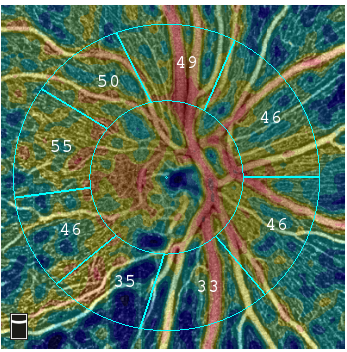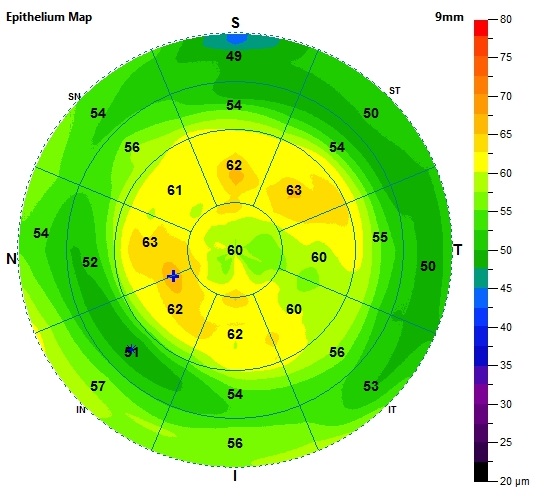 |
Vessel density of the optic disc displays loss of the retinal nerve fiber layer in a patient diagnosed with glaucoma. |
Chalk up three more advances for the always-evolving optical coherence tomography (OCT) technology, as devices on the Optovue platform gained new refinements this week.
First, the company’s OCT angiography device (AngioVue) received FDA clearance for two software enhancements. One, called AngioAnalytics, helps to bring objective assessment to the interpretation of results through trend analysis and other useful metrics, particularly regarding changes to the foveal avascular zone. The other, known as three-dimensional projection artifact removal, uses software to digitally erase overlying retinal vessels that would otherwise obscure an area of interest. The company says these additions further improve AngioVue’s ability to help clinicians diagnose and manage vascular-involved diseases such as diabetic retinopathy.
 |
| A 9mm epithelial thickness map in a post-myopic PRK patient demonstrates thickening over the central cornea. |
Anterior segment evaluation got a boost this week, too. The epithelial thickness mapping capability of Optovue’s Avanti widefield OCT has expanded its scan diameter from 6mm to 9mm, providing more data to clinicians. The technology allows better assessment of dry eye, keratoconus and refractive surgery patients whose vision has been impacted by changes to anterior corneal structure, Optovue says.
Visit www.optovue.com for more information.


